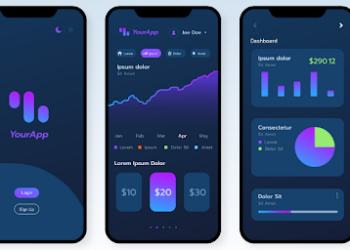Facebook launched React in the year 2013, and it’s 2025, which is almost 12 years. So much has changed over the years. A framework that was just developed as an internal tool has now become a popular go-to platform for web development. In the current scenario, it has become a more powerful and efficient framework, helping a custom web development company deliver scalable, secure, and high-performance applications.
Considering the constantly changing web development landscape, it is not optional but mandatory to choose the React framework. Because it is the framework only that can make or break the image of your web application.
And here comes the most interesting fact: despite the tough market scenario and emerging competitors, React powers 18.7% of the top 10,000 websites, as per the W3 Tech 2025 survey. Definitely, it is enough to cement its status as the pragmatic choice when it comes to building scalable web applications. Here in the article, we are going to discuss why and how React remains an indispensable choice for web development services till now in 2025 and what the future will be like. But before that, let’s get a quick introduction to React.
What is React.js
React.js is a JavaScript library that is declarative and component-based. It is used to build dynamic and interactive user interfaces. As discussed above, the framework was initially developed by Facebook (now Meta) in the year 2013. It was React only that introduced the concept of a virtual DOM (document object model) in which a lightweight, in-memory representation of UI is synchronized with the real DOM. This ultimately allowed developers to build fast and efficient web applications with minimal DOM manipulation.
The major difference between React and other frameworks is that it primarily focuses on the view layer of applications. This makes integration with other libraries and frameworks easy. And it is because of this only that the framework is used not only to build websites but also desktop applications (built via Electron) and mobile applications (via React Native). Showcasing its testament to versatility. If we see the latest declaration by companies, then almost 40% of the surveyed respondents reported using React in the tech stack (by Statista). This shows its popularity and enterprise-level credibility.
Examples of Web Apps Developed Using React
After it was deployed by Facebook in the year 2011 and further integrated into Instagram in the year 2012, it grabbed attention and traction. If we count on the examples of web applications developed using React, then many popular names are in the list. A few of them are Netflix, Airbnb, WhatsApp Web, Discord, Imgur, Bleacher Report, Feedly, SeatGeek, HelloSign, and many others.
Now we know the examples; let’s dig deeper into why it is the popular choice for web app development services around the world.
Why Choose React For Web App Development in 2025: Benefits Uncovered
From having a large community to providing component-driven architecture, there are numerous benefits offered by React that are mentioned below:
Unmatched Ecosystem & Community
The nuclear advantage of React is its ecosystem. With over 2 million NPM packages, developers access battle-tested solutions like Redux Toolkit for state management, React Router v7 for navigation, and TanStack Query for data fetching. Community support dwarfs alternatives. Stack Overflow hosts 1.8M+ React questions, while GitHub’s 250k+ contributors ensure rapid bug fixes. In the time of tight deadlines, this knowledge hub can turn complex challenges into solved problems.
Component-Driven Architecture Evolution
Modern React transcends traditional component models. For the dynamic apps that need SEO and speed, the server components enable hybrid rendering. When the offloaded data is fetched by the server, the time-to-interactive (TTI) improves by 3.2x (Next.js Benchmark 2025). Meanwhile, micro-frontends via Webpack Module Federation make the teams scale codebases independently. Combine this with UI libraries like Shadcn UI, and developers ship consistent interfaces 68% faster than building from scratch.
Performance at Scale
The virtual DOM of React offers an efficient way to update the UI, and that too without the requirement to reload the full page or do extensive DOM manipulations. By updating only what’s necessary, React drastically improves performance. This leads to
- Faster rendering
- Reduced memory usage
- Smooth user experiences, even under high data loads
Performance remains a key differentiator in user engagement and retention. And React delivers on that front.
Cross-Platform Dominance
React’s ecosystem extends well beyond the web. Using tools like
- React Native for mobile development
- Electron for cross-platform desktop apps
- Next.js for hybrid web applications
Companies hire React developers to reuse code across multiple platforms. This reduces cost and time to market for them. This flexibility is definitely crucial for startups and enterprises, especially in 2025’s competitive digital economy and beyond.
SEO Optimization and SSR Support
Over the years, React has emerged as one of the best options for handling search engine optimization (SEO) needs. On the other hand, frameworks like Next.js and Remix support server-side rendering (SSR), static site generation (SSG), and hybrid rendering approaches that collectively make React apps more SEO-friendly. For the businesses that rely more on discoverability and also aim for fast-loading pages, Reach brings scalable solutions for them.
Enterprise Adoption & Hiring
Don’t just think that React isn’t a fleeting trend. Backed by Meta (Facebook), one of the most influential tech companies in the world, it already strengthens the trust. This backing ensures:
- There is a continuous evolution of the framework
- Updates are regular, and security patches are continuously monitored and addressed
- It is reliable in long run, especially in context of enterprise adoptability
This is the level of support and confidence React brings to the CTOs, product managers, and the developers who are planning for long-term scalable digital products.
Developer-Friendly Learning Curve and Tools
React has one of the most developer-friendly learning curves among frontend technologies. With clear documentation, tons of free resources, and tools like
- React Developer Tools for debugging
- CodeSandbox, StackBlitz, and VSCode extensions
- Active Discord and GitHub communities
Developers can onboard quickly, collaborate effectively, and focus more on solving business problems rather than struggling with the tech stack.
The Verdict
There is no second thought in declaring that React continues to dominate web app development in 2025, and definitely for good reasons. The component-based architecture, unmatched ecosystem, developer tools, and, last but not least, the strong developer community become its support system for building high-performance, maintainable, and scalable applications.
Right from the startup that is looking to build an MVP to an enterprise that wants to build a large-scale product, React provides the power and flexibility required to deliver modern digital experiences. Considering the tech scenario now, in which technologies change rapidly, React has not only adapted to the changing scenario but has also gained widespread adoption, making it future-proof. And yes, it is not only for 2025; we can see it beyond the year.







